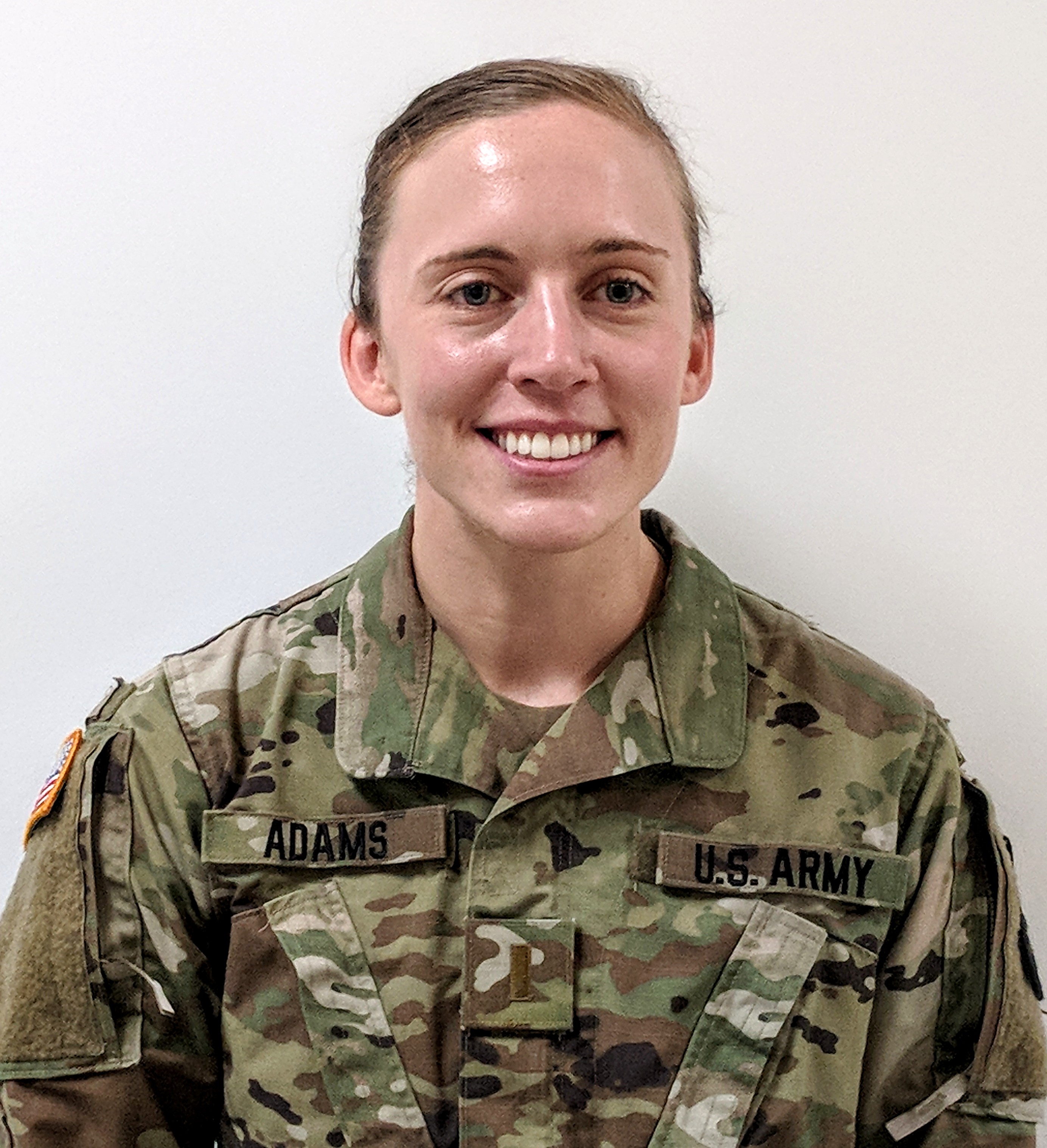Future in Army cyber branch awaits UWF alumna
May 29, 2018

A week after walking onto the Pensacola Bay Center stage at commencement, Chelsea Adams returned to the University of West Florida dressed in her Army fatigues as a Gold Bar Recruiter for the UWF Army ROTC Program.
Adams holds the rank of Second Lieutenant and will recruit at her alma mater for two months as she prepares for a future in the Army cyber branch. She earned her Master of Science in Information Technology with a specialization in Cybersecurity Degree at UWF and showcased her cybersecurity talents as an intern at the U.S. Department of Defense and at Navy Federal Credit Union.
Cadet Command selected Adams for the DoD internship. She also earned an outstanding evaluation and performance at Advance Camp in Fort Knox, Kentucky (three of 37 in her platoon to earn that distinction), and she graduated UWF Army ROTC with honors.
“As a result of her academic and ROTC accomplishments, Adams was selected as a Distinguished Military Graduate, putting her in the top 10% of over 5,500 Cadets in her ROTC class nationally,” said Lt. Col. Henry Delacruz, chair and professor of the UWF Department of Military Science. “Adams has been one of the best, if not the best Cadet that has been commissioned here at UWF Army ROTC in the three years that I've been in the program.”
The 28-year-old Adams grew up in a military family, a majority of whom served in the Army, but she took a scenic route to following in their footsteps.
In 2011, Adams completed her undergraduate studies at the University of Washington and then entered the private sector as a systems analyst. She worked for nearly five years before the allure of serving in the newly established Army cyber branch redirected her from Seattle to Pensacola.
Adams sought an institution with cybersecurity graduate courses and an ROTC program to put her on the Army cyber path. She found the perfect fit at UWF with its nationally-renowned cybersecurity program and recognition by Military Times, GI Jobs and Military Advanced Education as a military and veteran friendly institution.
“I loved it here. I thought it was an excellent spot to be for graduate school,” Adams said. “The community here is small, but especially in cybersecurity with the amount of military presence, I feel like there’s a lot happening in this industry right here, so it’s been cool.”
Enrollment at the University of Washington is about three times that of UWF. Adams said the class sizes at UWF benefited her in establishing professional relationships with faculty. She cited Dr. Dallas Snider, an associate professor in Computer Science and a faculty fellow for the UWF Center for Cybersecurity, as a faculty member who provided her valuable guidance.
Adams earned her master’s degree by completing a capstone project with Snider. She said her background as a systems analyst at companies in Seattle and then Navy Federal motivated her to research how to convey the information contained within substantial amounts of data.
“I was excited to see how cybersecurity was using data visualization because there’s so much data in cybersecurity that it’s a problem,” Adams said. “We can capture all of these interesting things that are happening on the network, but if we can’t make sense of them, does it matter? It’s really interesting in the sense that there’s so much more to do. I found a lot of opportunity in that field with that topic.”
Snider presented her research at the 2018 IEEE SoutheastCon on April 20 in St. Petersburg. Adams missed the conference to participate in the 2018 Mission Command Conference at the U.S. Military Academy at West Point, but Snider put the importance of her research in perspective for the audience at SoutheastCon.
“Chelsea’s research focused on new ways to visualize network traffic data for threat analysis,” Snider said. “This is significant because, while there are common cybersecurity threats across all organizations, some organizations have to focus more on specific threats; therefore, there is not a one-size-fits-all visualization tool for cybersecurity analysis.”







